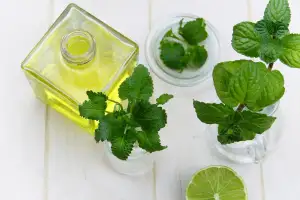Is it Safe to Microwave Styrofoam? Debunking the Myths and Ensuring Home Safety

Microwaving food has become a convenient and time-saving method for many households. However, concerns have been raised about the safety of microwaving certain materials, particularly Styrofoam. In this article, we will delve into the science behind microwaving Styrofoam and debunk any myths surrounding its safety. By understanding the composition of Styrofoam and how it reacts to heat, we can make informed choices for a safe and sustainable home.
Understanding Styrofoam: What is it Made of?
Styrofoam, commonly used as a packaging material and food container, is made from expanded polystyrene (EPS). EPS is a lightweight plastic foam that consists of 95% air. It is created by heating and expanding tiny beads of polystyrene, which are then molded into various shapes. The material's insulating properties make it ideal for keeping food hot or cold. However, its composition raises concerns about its safety when exposed to high temperatures, such as in microwaving. Let's delve deeper into these concerns and explore the science behind microwaving Styrofoam.
The Concerns: Potential Risks of Microwaving Styrofoam
Microwaving Styrofoam has long been a topic of concern among consumers. The main worry is that harmful chemicals from the Styrofoam could leach into the food when heated in the microwave. This has led to fears about potential health risks, including cancer and other illnesses.
One particular chemical of concern is styrene, which is used in the production of polystyrene foam. Studies have shown that when heated, styrene can migrate from the foam into food or beverages. High levels of exposure to styrene have been linked to respiratory issues, irritation of the eyes and skin, and even potential neurological effects.
Another concern is the possibility of melting or warping of Styrofoam containers when exposed to high temperatures. This can result in hot liquids or foods spilling out and causing burns or other injuries.
It's important to note that not all Styrofoam products are created equal. Some may be labeled as microwave-safe, indicating that they have undergone testing and are deemed safe for use in microwaves. However, it's crucial to follow these guidelines strictly and avoid exceeding recommended heating times or temperatures.
To mitigate these risks, it is advisable to transfer food into microwave-safe glass or ceramic containers before heating. These alternatives do not pose the same concerns as Styrofoam and can be safely used in microwaves without compromising food quality or safety.
In conclusion, while there are potential risks associated with microwaving Styrofoam, it's essential to make informed choices for our health and safety. By understanding the science behind its reactions to heat and following safety precautions, we can minimize any potential harm while still enjoying the convenience of our microwaves.
The Science Behind Microwaving Styrofoam: How it Reacts to Heat
When it comes to microwaving Styrofoam, understanding the science behind how it reacts to heat is crucial. Styrofoam is made of polystyrene, a type of plastic that contains air pockets. When exposed to high temperatures, these air pockets can expand rapidly and potentially cause the Styrofoam to melt or release harmful chemicals.
The main concern with microwaving Styrofoam is the potential release of styrene, a compound found in polystyrene. Studies have shown that when heated above 100 degrees Celsius (212 degrees Fahrenheit), styrene can leach into food and beverages. This is why it is important to be cautious when using Styrofoam containers in the microwave.
Additionally, microwaving Styrofoam can also lead to the release of toxic gases such as benzene and toluene. These gases are known to be harmful when inhaled and can pose health risks.
It's worth noting that not all types of Styrofoam react the same way when exposed to heat. Some varieties are specifically designed for microwave use and are labeled as "microwave-safe." These containers are usually made from a different type of plastic that can withstand higher temperatures without releasing harmful substances.
To ensure safety, always check the packaging for any instructions or warnings regarding microwave use. If there are no specific guidelines provided, it's best to transfer your food into a microwave-safe container before heating.
By understanding the science behind how Styrofoam reacts to heat, you can make informed choices about its use in your home and prioritize your health and safety.
Safety Precautions: Guidelines for Microwaving Styrofoam
To ensure the safe use of Styrofoam in the microwave, it is important to follow these guidelines:
1. Check for microwave-safe labels: Look for containers specifically labeled as microwave-safe. These containers are designed to withstand the heat generated by microwaving and are less likely to release harmful chemicals.
2. Avoid high temperatures: Do not expose Styrofoam to extreme temperatures or prolonged heating in the microwave. High temperatures can cause the material to melt or release toxic substances.
3. Use microwave-safe covers: When covering food with Styrofoam, make sure to use a microwave-safe lid or wrap it with a microwave-safe plastic wrap. This will prevent any potential chemical leaching into your food.
4. Do not use damaged or old containers: Discard any Styrofoam containers that are cracked, melted, or discolored as they may release harmful substances when heated.
5. Be cautious with oily or fatty foods: Avoid microwaving greasy or oily foods in Styrofoam containers as they can cause the material to break down more easily and potentially contaminate your food.
By following these safety precautions, you can minimize any potential risks associated with microwaving Styrofoam and ensure a safer cooking experience.
Alternatives to Microwaving Styrofoam: Eco-friendly Options
When it comes to microwaving food, it's important to consider eco-friendly alternatives to Styrofoam. One option is to use glass or ceramic containers that are microwave-safe. These materials are not only safer for your health but also more sustainable as they can be reused multiple times.
Another alternative is to use microwave-safe silicone containers. Silicone is a flexible and heat-resistant material that can withstand high temperatures without releasing harmful chemicals. It's a great option for those who prefer convenience and want to reduce their environmental impact.
If you're on the go and need a portable option, consider using stainless steel lunch boxes or BPA-free plastic containers labeled as microwave-safe. These options are durable, easy to clean, and can be used repeatedly.
By choosing these eco-friendly alternatives, you not only ensure the safety of your food but also contribute to reducing waste and protecting the environment. So next time you reach for the microwave, make a conscious choice for a greener future.
In conclusion, it is important to make informed choices when it comes to microwaving Styrofoam. While there are concerns about the potential risks of using Styrofoam in the microwave, scientific research suggests that it is generally safe as long as certain precautions are taken. Following guidelines such as using microwave-safe containers and avoiding high temperatures can help minimize any potential health risks. However, for those looking for more sustainable options, there are eco-friendly alternatives available that can be used in place of Styrofoam. By making conscious decisions about the materials we use in our homes, we can ensure both safety and sustainability for ourselves and the environment.
Published: 12. 12. 2023
Category: Home



